My Perception: Let your Interior Contribute with Joy
Below you will read:
The UN requires us to reach for spiritual transformation to reach personal sustainability. The transformation enables joy to be the ultimate awareness interior can contribute with to the user’s consciousness. Professional development enables social consciousness accessing more of human capacity when measuring to new defined units and obtaining new types of income streams for interior professionals.
Dogmatic and Objective versus open to Conscious Awareness
Sustainability appears as the public solution that unites us to resolve the overwhelming number of crises that surrounds us. I am all right with that, under the precondition that we also sustain each ourselves, as I regard as the mere point of humans and earth benefiting from sustainability.
Our ultimate benefit is joy. Our path to joy goes via obtaining neutrality in the mind, in our emotions and in the body. Defying this natural inner path enhances our risk to fall ill, despite our ego’s trying to save our thoughts and emotions through many and extrovert reactions. We find ourselves in a state as described in H.C. Andersen’s fairytale ‘The Water Drop’1 or as in Hieronymous Bosch’” The Garden of Earthly Delight”2.
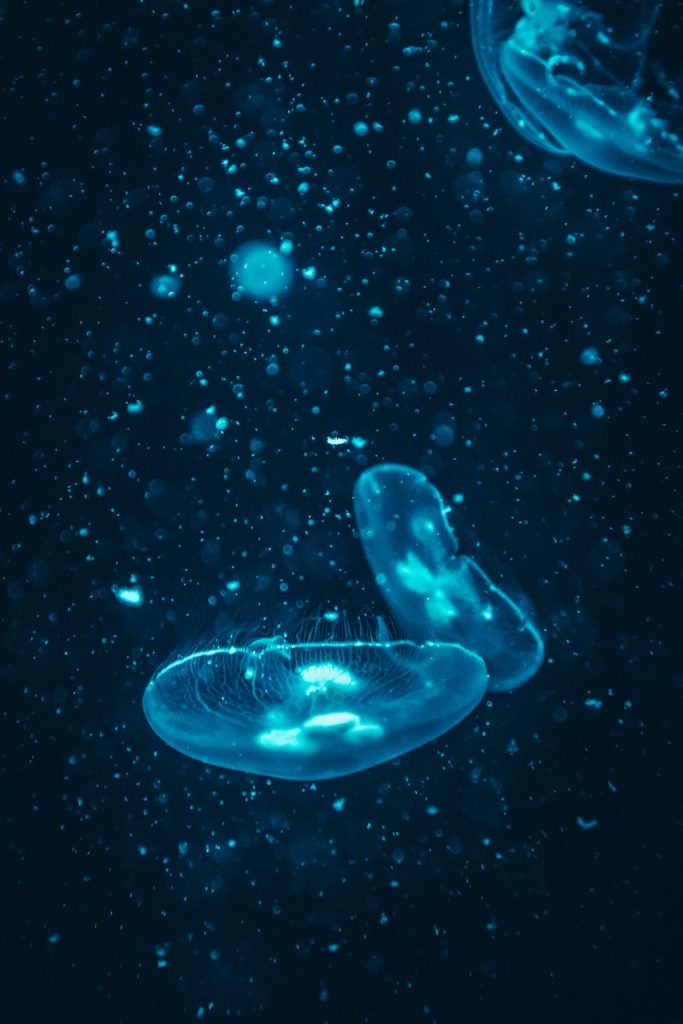
Both examples depict people living with many psychological shadows, ego needs and projections. Steen Hildebrandt writes more contemporary about psychological waste in our global sustainability crisis, and cites Jes Bertelsen4:
“The more people there are on Earth, the more the amount of psychological waste grows. Not only does the amount of pollution in each individual grow – in the form of physical blockages – but the amount of projected psychological waste also grows. If population growth increases exponentially, then – one could say – the quantity of psychological waste (negative emotions, infantile substance, repressions, trauma) also grows exponentially”. Jes Bertelsen5
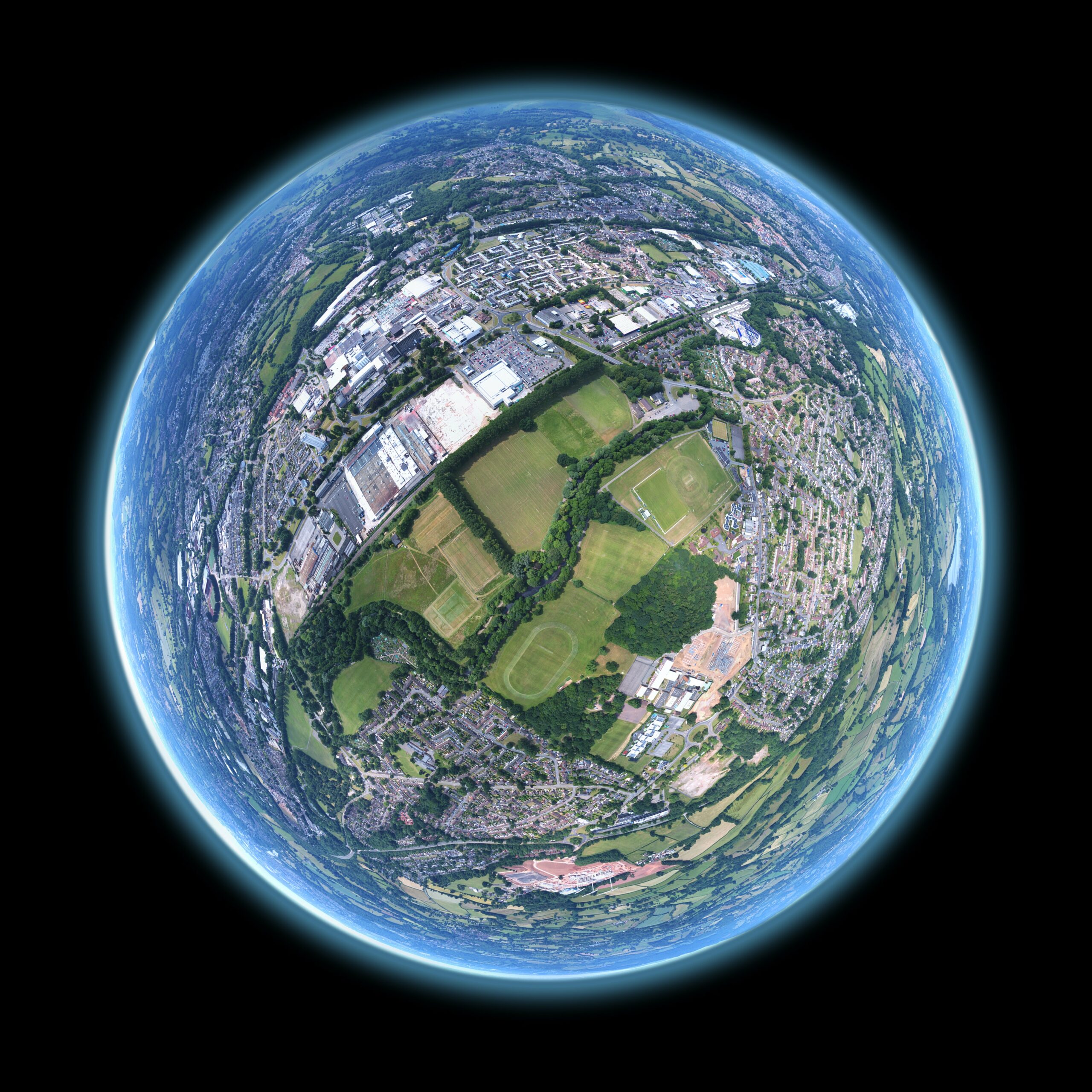
On our journey towards joy, the content of this document includes the subject of spirituality. It is, however, my clear understanding that many of us are afraid of the word ‘spirituality’ or rather, what lays beneath it. – And I understand it for historic reasons: the dogmas of the formal church faith, various forms of persecution and punishment, and wars in the name of God. However, reacting to such conditions keeps the reacting party, as well as the dogmatic party in the dark.
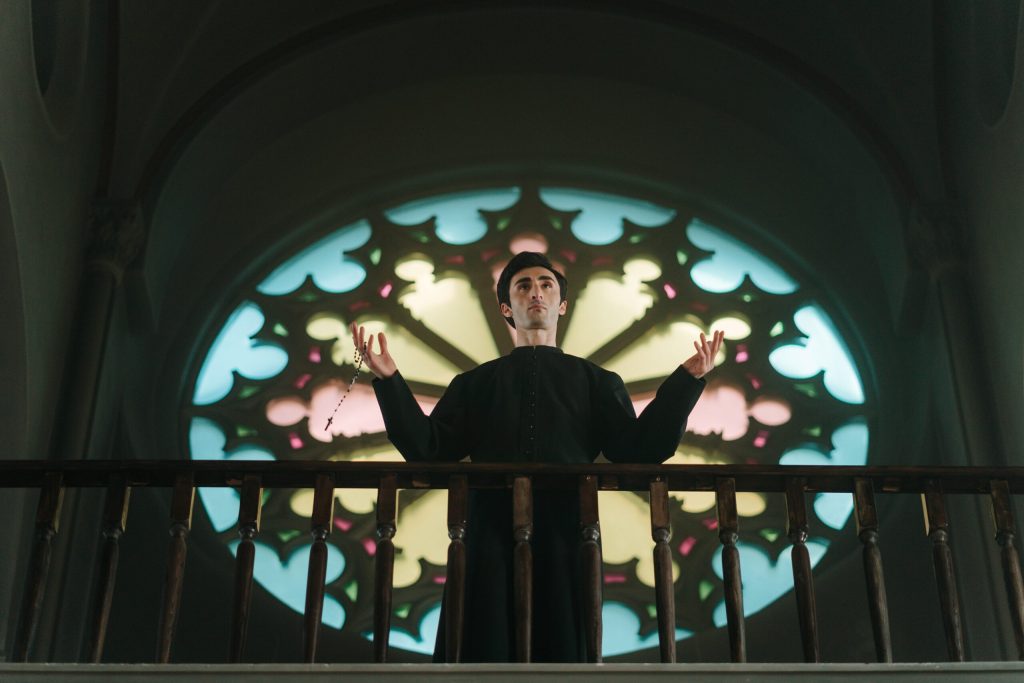
I say so on the background of my personal experience towards spirituality marked by free will and delight. For many people and for me as well, nature and nature observation provide experiences of release and healing. Personally, I took to watercolor painting from a young age developing that into a path of art and design filled with bodily experiences of freedom and peace in devotion to the divine.
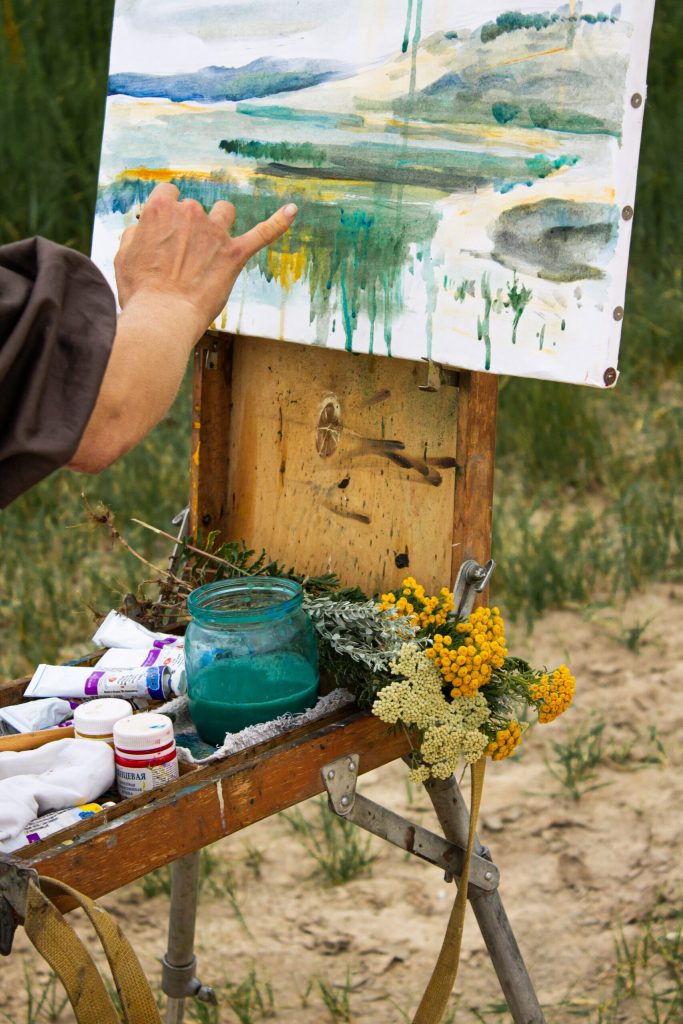
General awareness of nature and of people’s own inner natural resources destabilize old preconditions for dogmatic faith and for impersonal, objective nature observation. Spirituality is referred to as consciousness or as extended consciousness or as the compound form of consciousness-&-awareness.
Empathic Interior Design Includes Joy
As a designer guided by the divine with my fingers in the clay and, incidentally, a later forming from both the art and commercial faculties, I, like many others, experienced bodily realizations of how our immediate surroundings affect us; especially how much we are influenced by cleanliness and beauty: we can design an imprint of our characteristics in our immediate surroundings, in other words: we design how we want to be influenced by our interior design, in order to experience the most joyful version of our life.
“Væredygtighed” (most likely translated as ‘be-stainability’) is a term coined by a group of brilliant Danes. Be-stainability is defined as the inside of sustainability. Their purpose is to create a general understanding of additionally 9 sustainability goals, to the UN’s 17 global goals, of which three goals are formulated as:
• #6: Develop empathy, understanding and cordiality
• #5: Increase bodily presence
• #9: Develop the awareness that man is an integral part of nature.
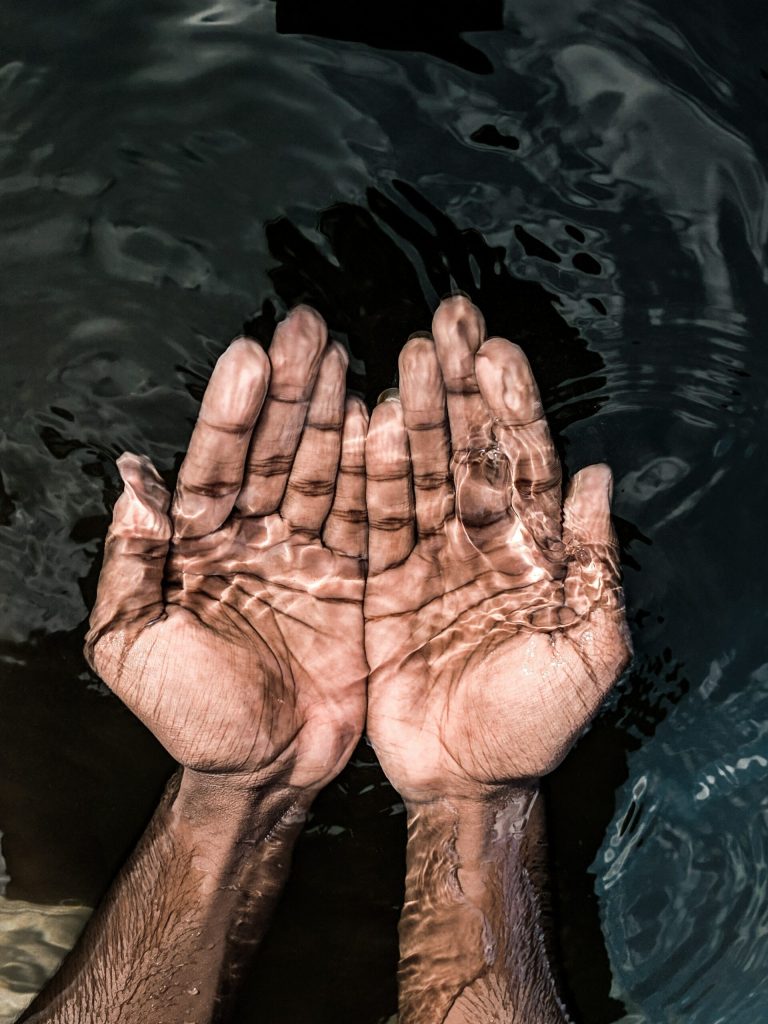
The center thus focuses on developing a new language and terminology, so that we can handle the content of our newly perceived world that now is becoming reality.
We transform psychological waste into spacious openness, on a personal level, and then towards fellow human beings with consequences for society, inspired by P.C. Asmussen, Circus Director, from the book “Væredygtighed”6, where he talks about this process’ need for trust: that we can like each other, that we are open towards each other.
The ‘Center for Væredygtighed’ is just one of many initiatives that deal in practice with how we live our everyday lives with an awareness that expands to include a greater degree of empathy and applied expansion of our human capacities. Others include e.g.:
- LOHAS7 organization: Lifestyle of Health and Sustainability
- Earthships8
- Tinyhouse-living9
- DGNB – ‘Heart’-certification10
- Institute for Noetic Science11
- The Galileo Commission12
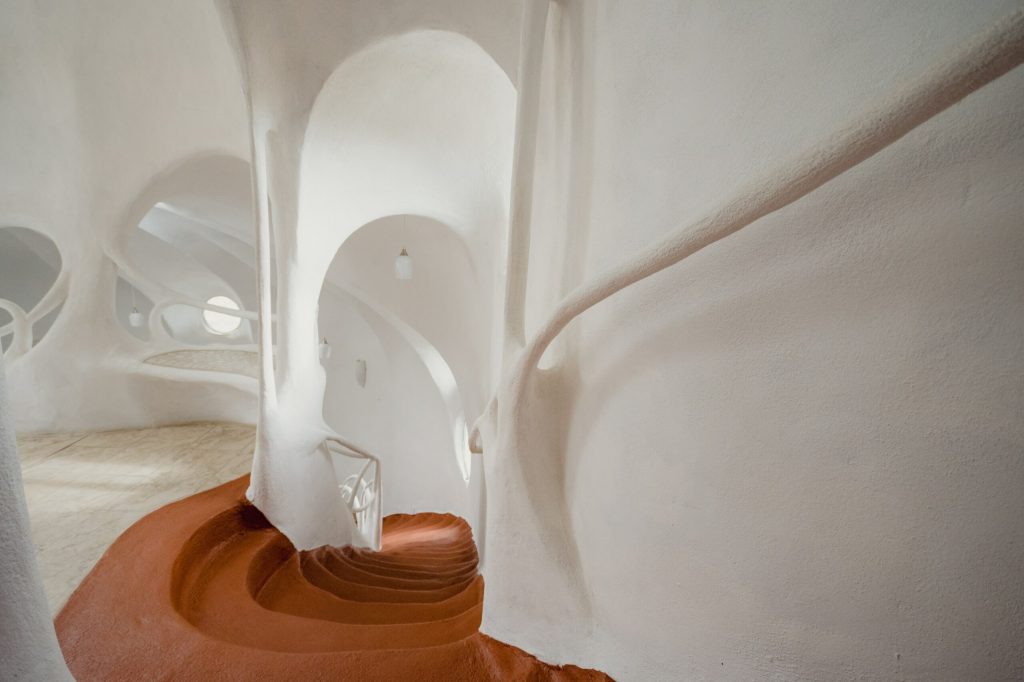
Using an Extended Empathy to Obtain Comfort, Desires, and Wealth
The combination of using awareness and consciousness is reflected in the experience of an interior; enjoyment of colors, shapes and materials contributes to sensory experiences in the body that play together with the construction of a consciousness that rejoices.
In recent years, it is my understanding that many professional subjects have seen new methods and theories pursuing the same goal as UNFPA, synchronistically:
“Sustainable development requires a ‘spiritual transformation’ of ourselves and the organizations we are linked with that actively extends to societal…level.”13 United Nations Population Fund, UNFPA, 2016
Such can be exemplified by:
- Leadership and organizational development: Ottos Sharmers Theori U14
- Pedagogy: Jes Bertelsens Pentagon15
- Interior Design: Inner Sustainability16
Translating the new perspectives within the natural sciences faculty (Braden, Zohar17 etc.), into interior design ‘language’ and applying these tools in interior design, we have the opportunity to design our interior to give us expanding possibilities and to experience a deeper connection between us, between each other and the outside world.
Using this knowledge, we are able to develop tools that catalyze resilience (comfort zones), achieving goals (desire zones) and achieving opportunities (wealth zones).

Paradise-O-Meters
The relationship between the interior’s physical qualities and the impact of those qualities on our psychological well-being is well known. It can, for example, be the relationship between temperature and sleep or air-quality and attention. In order to achieve our preferred living conditions, we adjust the physical conditions in our surroundings that we can measure, e.g., oxygen/CO2 in the content of the air, to become the best versions of ourselves we can become; to create paradise-like conditions for ourselves. That’s why I call the measuring machines ‘paradise-o-meters’.
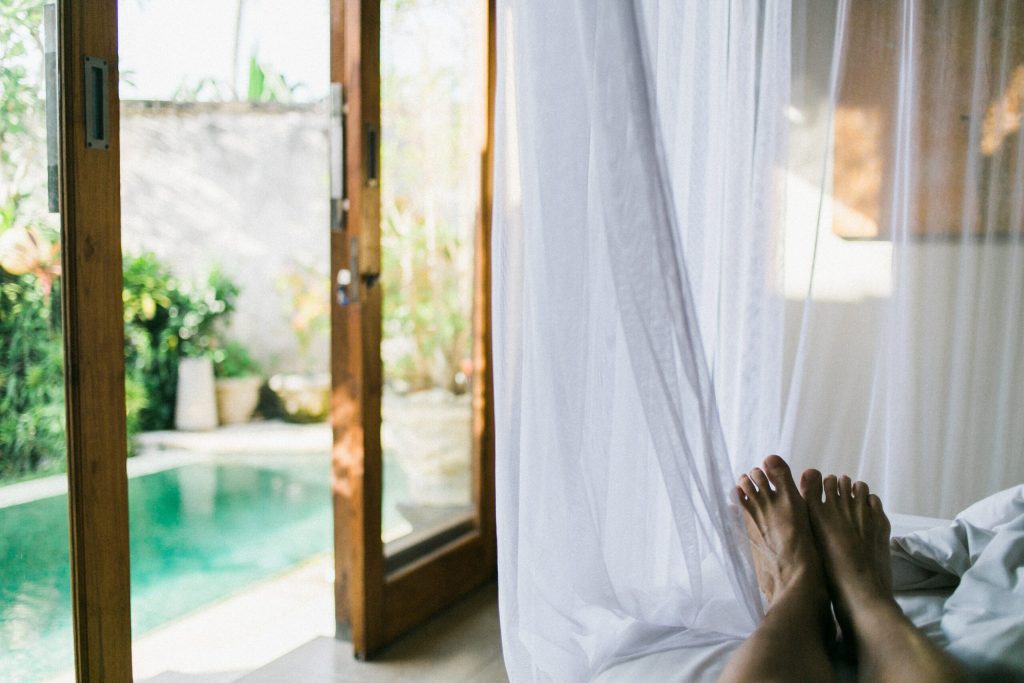
Regenerative design e.g., Quality of Life, Evidence Based Design, and Attention Restoration Theory, are examples of conventional interior design theories applying tools that the interior design professionals use to create the understanding of a furnished area that is used for e.g., easy flow (airport) or revitalization (hospital) etc.
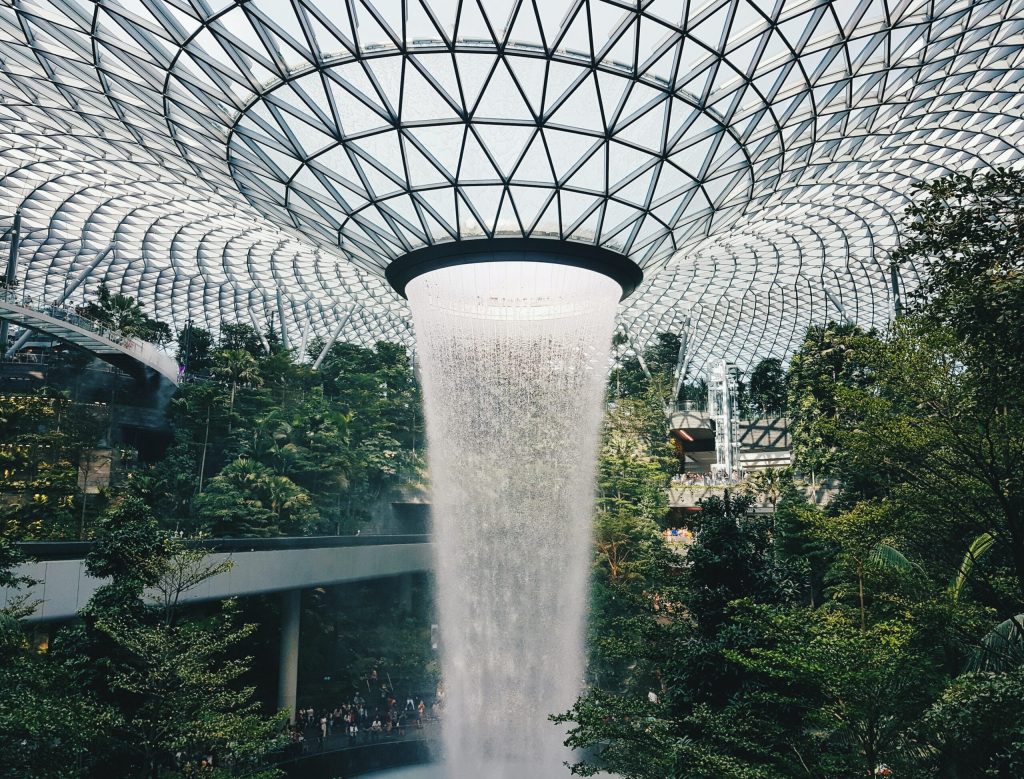
Despite applying professional theories for well-being, we live with social problems such as anxiety and unhappiness. As we stay indoor 90% of our time, indoor-living holds an opportunity for transforming life-supporting living conditions:
“We cannot solve problems by using the same thinking that we used when we created the problems” Albert Einstein18.
Or as Peter Drucker says:” The greatest danger in times of turbulence is not the turbulence; it is to act with yesterday’s logic”19.
Sustaining the Development of professional Interior Design
The next level of the professional interior design industry includes involving human capacities. It can, for example, be via an expanded capacity for empathy.
United Nations requires our spiritual transformation. – And as Jes Bertelsen points out: we are born spiritual, and as Otto Scharmer reveals, we have a method to apply our new possibilities of our beloved interior design faculty; with new terminology, returning to The Center for ‘Væredygtighed’.
Sustaining the development of the professional interior subject, the veda’s carry information contributing to the formation of the Theory ‘U’, perspectivated by Peter Bastian’s20 model brought forward in Tor Nørretranders21 book ‘Mærk Verden’22, here adapted to the interior context, when applied with awareness and consciousness.
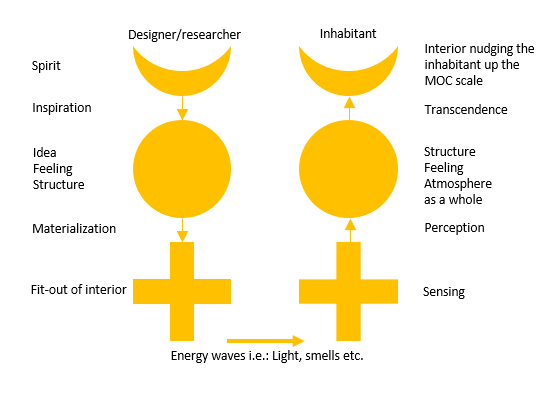
Sustaining the development of professional interior subject is also holistically supported by systems thinking where TCM23 has gathered thousands of year’s empirical observations.
Recent findings in the realm of natural sciences may contribute to perspectivate new possibilities of our interior design faculty e.g., inspired from Danah Zohar24 in the model showed below. The figure shows a model of percipated beauty formed of Danah Zohar’s contribution to quantum mechanics aesthetics, combined with M.D. Hawkins logarithmic scale. The model requires independent introduction, presented in another article25, here just attached as a teaser to the context.
The Map of Consciousness is a logarithmic scale that M.D, Dr. Hawkins developed, and which provides the possibility of guiding the human spiritual life towards living the vision of joy.
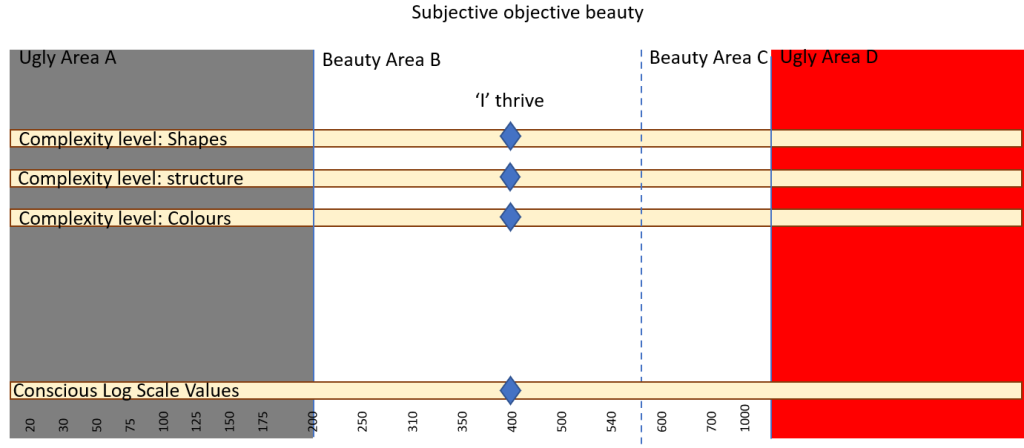
NETWORK ESTABLISHES OUR PROFESSIONAL DEVELOPMENT
It is my desire that together we might meet to establish a sustained holistic training in the interior design profession. For that, new terms and words must be developed. ‘Enerqist’ is an example of a new term coining the unity of the interior space and the person using that space. It is important that we enlarge our awareness together because it forms our common consciousness.
We also work with new ways that a person’s place of residence can contribute to the person’s transformation of psychological waste to achieve resilience and joy. Including the user of the place, with the built structure, the interior and the time deepens the former use of empathic method.
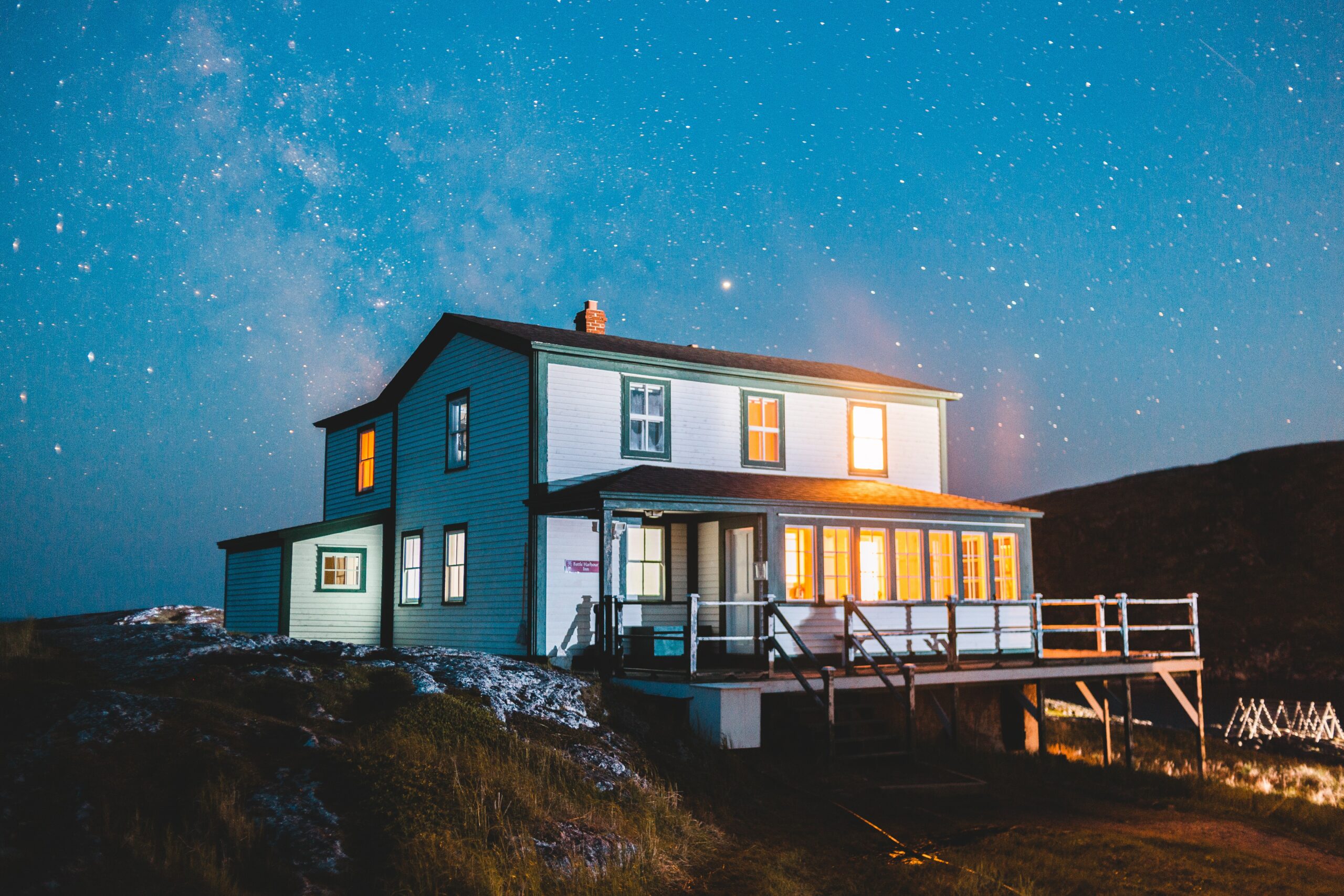
Under the provision of including the holistic person: body, mind, emotions, and soul, we add options to conventional professional interior design when e.g.:
• Considering the interaction of the built structure with the elements around it (boulders, water flow etc.)
• Selecting points of awareness found in the built structure in accordance with the use of the specific indoor area’s function conditioned by time and place.
- Remedying the interior to fit the match of the house, the person, time, and place
New terms are already available as inspiration. We work to make it contemporary, adapt the content, terms, and methods to our western culture, and at the same time expand the western culture to possibilities for the expanded use of interior design. -And we would like to welcome your contribution as well.
”What counts and what must be counted?” Steen Hildebrandt26
We come from an industrial society with bias towards external performances, and an under-prioritization of the empathic dimension in interior design.
In our western culture, we need evidence in the form of measurements. We want that as long as we have not yet opened ourselves up sufficiently to navigate according to our personal dynamic intuition:

But until then, it is possible to measure. Not only with the ‘paradise-o-meters’. We must use other methods and assessments. For example, evidence-based research results are based on facts, but those facts belonged to the ‘old’ reality. Now we have expanded that reality with access to more of human capacity.
“You have to measure, not necessarily in the sense of numbers, but in the sense: there are explicit formulations of what results are desirable, and also indications of how we measure or decide, to what extent and in what ways, we have moved us in the direction of the goals for a given period” – Steen Hildebrandt27
Developing the interior faculty with conscious awareness, new types of goals, results, and effects strive to achieve the most advantageous conscious design. From that we must develop the measurement and description methods that can help us to develop a more suitable and desired interior design
However, “You cannot contact another human being more deeply than you have contact with yourself. We listen to another person with our own body, presence, and ability to empathize, and we cannot decode a signal we receive, better than our own receiver is open and receptive to it”. – Steen Hildebrandt28
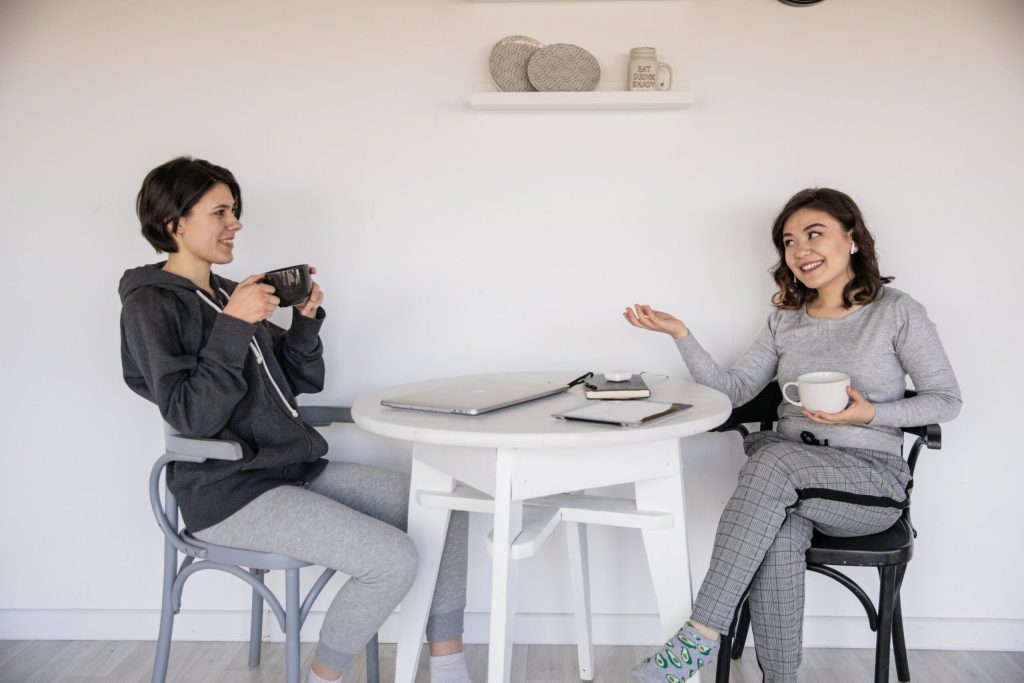
To reach such results, the ‘paradise-o-meters’ measure in too rough units. We must use an instrument that can measure the highest truth of the individual human being.
“Man is the measure of all things: for things that are, that they are, for things that are not, that they are not”. Protagoras29
We can use kinesiology for such measures.
Growth Opportunities
Application of kinesiologic measures in the interior design profession can be advantageously founded together. Tests and answers to related questions create a shared awareness.
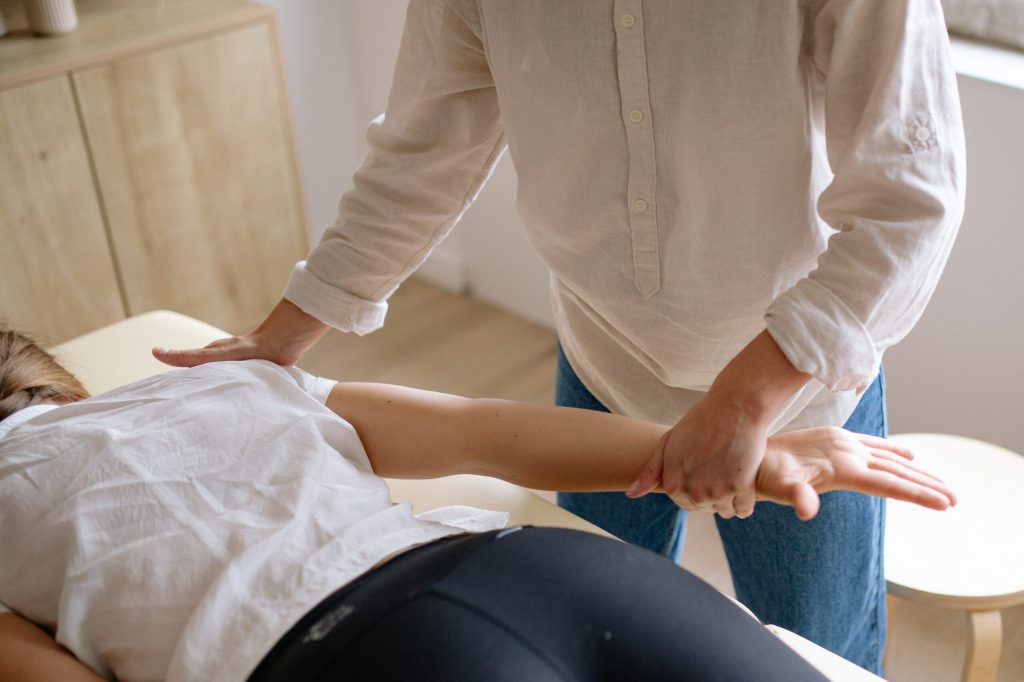
Questions might pertain the scale measured by. M.D. Dr. Hawkins has developed a Map of Consciousness that will fit when aiming for joy in interiors.
Joy in the interior design is about achieving a lively energy indoors that is slightly more energized than the energy level of the users themselves. As an opposite example, some readers are probably familiar with the ‘Vampire Effect’ in the bedroom: you wake up more exhausted than you were when you went to sleep. By accumulating more energy with colors, materials, and shapes, more of the electromagnetic energy that adds to human energy and resilience is supplied.
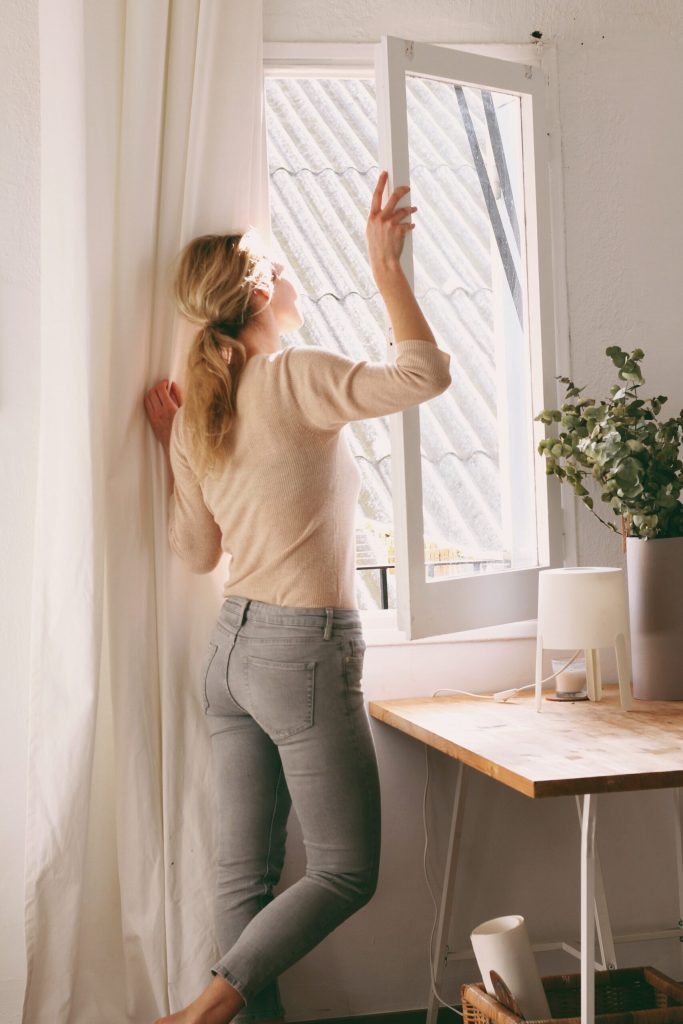
For the interior design profession, this addition is important, and for our western-cultural societies it is expected to have a positive effect. The focal point is the private interior design companies with several new opportunities for income streams if the interior design professional has the required training and experience. Additional income streams might include:
• To measure energy levels according to place/time/people
• Produce new types of boards and prototypes according to the measurements
• To implement the changes that the measurements indicate
• To use systemic meditations
Together, we can do less and achieve far more impact, we can act in authentic harmony and live of it, and we can create value in abundance that is sustainable.30
THANK YOU FOR BEING CURIOUS
I thank you for being curious.
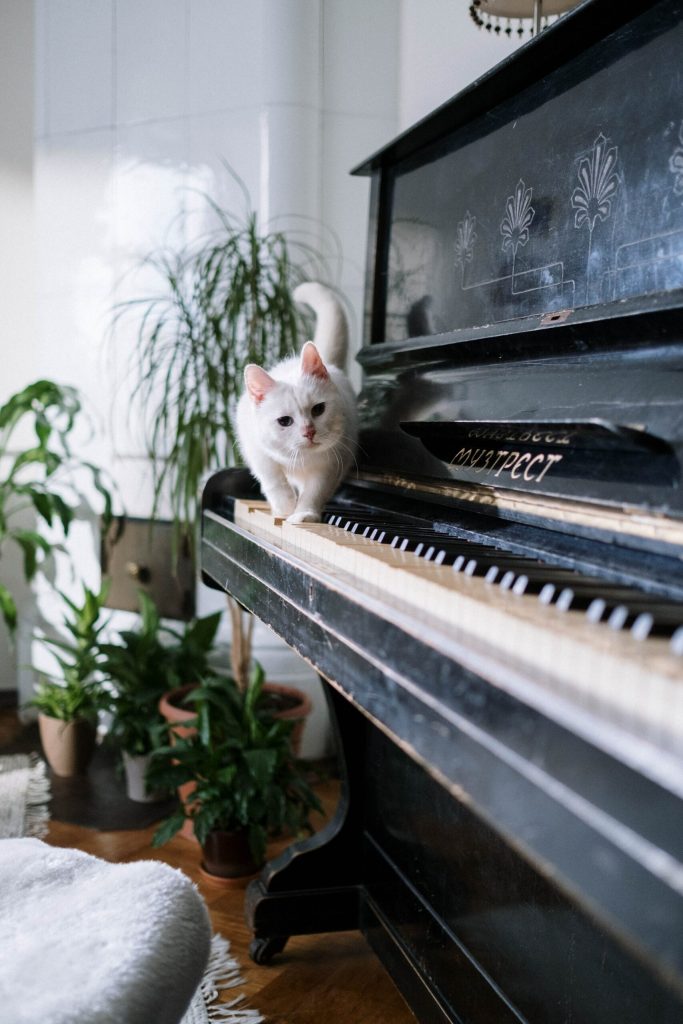
I encourage you to take part in this joint awareness-raising within professional interior design.
Please contact me for the purpose of joining our efforts.
From January 2023 I will produce a limited number of cases at a reduced rate that focus on raising the energy level in a house/built environment: contact me if you want to help make cases (prerequisites are required) or if you have desire to add a house (conditions apply).
1 https://www.andersenstories.com/da/andersen_fortaellinger/vanddraben , 09-2022
2 https://www.hieronymus-bosch.org/The-Garden-Of-Earthly-Delights-Panel-2.html , 09-2022
3 Danish professor emeritus in organizational and management theory
4 Born 1946, Dr. in history of ideas from Aarhus University, spiritual teacher and author
5 Hildebrandt S. ’Vækst og bæredygtighed’, (2017) Librisbusiness, pp71-72
6 Center for Væredygtighed, ’Væredygtighed (2022) Dafolo pp 180
7 https://www.lohas.se/wp-content/uploads/2015/07/ErnstYoung-Studie-2008_ey_LOHAS_e.pdf , 09-2022
8 https://www.earthshipglobal.com/we-build-earthships , 09-2022
9 https://tinyhouseliving.dk/ , 09-2022
10 https://dk-gbc.dk/certificering , 09-2022
11 https://noetic.org/ , 09-2022
12 https://galileocommission.org/ , 09-2022
13 http://papers.synergaia.vision/Reflection_Paper_The%20Spirituality_of_Human_Transformation_aug2016.pdf , 30-07-2022
14 https://ato.dk/videndervirker/Fagligtarkiv/Sider/Artikler/2010-03%20Theory%20U.pdf , 09-2022
15 https://vaekstcenteret.dk/vaekstcenter-paedagogikken/ , 09-2022
16 www.QiCurious.com , under development
17 See the authorship of for example Gregg Braden, Danah Zohar and many others. Commonly, they advance perspectives on the consequences of modern-day scientific findings for lay persons
18 Albert Einstein (1879-1955)
19 Peter F. Drucker (1909-2005)
20 (1943-2017), theoretical physician and classical bassoonist
21 (Born 1955) Danish author and science journalist
22 Nørretranders T. ’Mærk Verden’ (1991), Gyldendal s.150
23 TCM is an abbreviation for Traditional Chinese Medicine
24 Zohar, D. ’Den kvantemekaniske bevidsthed’, Gyldendal 1990 chapter on quantum aesthetics
25 On www.QiCurious.com
26 Hildebrandt S. ’Vækst og bæredygtighed’, (2017) Librisbusiness p 279
27 Hildebrandt S. ’Vækst og bæredygtighed’, (2017) Librisbusiness pp 284-285
28 Hildebrandt S. ’Vækst og bæredygtighed’, (2017) Librisbusiness p 288
29 ca. 485-415 f.Kr, The Homo-Mensura sentence
30 Inspired by: https://www.uption.dk/wp-content/uploads/2014/05/55teoriu.pdf , 09-2022
© Mechanical, photographic, or electronic reproduction of this document or parts thereof is prohibited without the Blissbode’s written consent.
